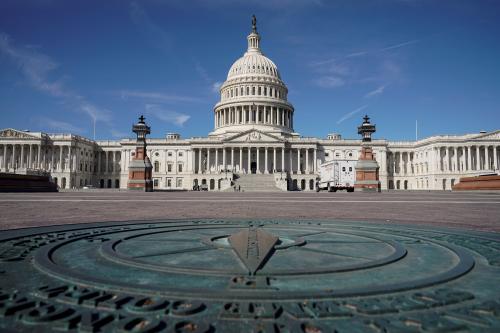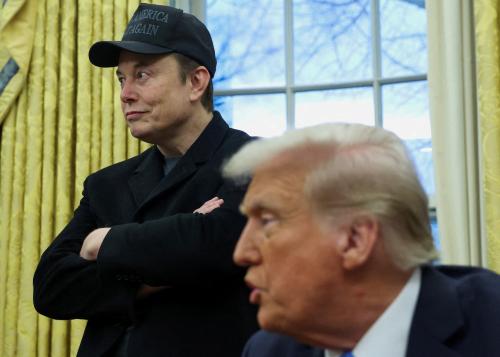Some criticisms of the multiemployer pension rescue are a bit far-fetched.
In the $1.9 trillion American Rescue Plan Act, Democrats inserted an estimated $86 billion to prevent the collapse of distressed multiemployer pensions and preserve the retirements of some 1,500,000 workers and their families. As I have written elsewhere, this was the first time that a major pension law wasn’t bipartisan: after years of failed attempts at bipartisan compromise, Democrats acted unilaterally. That, in turn, outraged both Republicans (many of whom oppose “union pension plans”) and those who want reforms in pension funding practices and oversight.
Opponents complain that long-discussed reforms in pension funding and oversight were all dropped from the “Butch Lewis Act” (named after a union leader whose widow’s pension would have been devastated). They omit mentioning the reforms were abandoned in order to get a majority that complied with the Senate’s procrustean budget rules. Anticipating dire consequences from the reform-absent rescue, they warn that—if plans don’t learn from the past and Congress doesn’t step in sometime —they could run into trouble again decades from now when the $86 billion is spent.
Even for pension experts, the possibility that plans might get into trouble decades from now isn’t much of a crisis, so opponents are getting creative, coming up with catastrophic scenarios they claim are both real and more immediate. These claims don’t hold up very well (though explaining why gets a bit nerdy).
Will the rescue lead to mass withdrawals? No.
In an article published by the Pension Research Council at the University of Pennsylvania’s Wharton School, Aharon Friedman, a former Republican Treasury official and House staff member, argued that the rescue bill won’t actually result in a rescue; instead, employers will withdraw from these plans, causing them to fail anyway.
Mr. Friedman’s analysis focuses on the fact that the financial penalties for withdrawing from such plans will be dramatically reduced by Butch Lewis. These penalties are based in part on the amount of plan underfunding. The $86 billion will reduce that underfunding, so he believes employers will take advantage of the reduced penalties and flee critical/distressed plans. His analysis, in my view, misses several important points:
- The real factor keeping most employers in plans was and is that a union must agree to withdrawal. Prior to passage of the law, participating employers faced the prospect of steadily increasing underfunding and could make a case for being allowed to withdraw. A major employer, UPS, was able to demand and get agreement from a union to withdraw by making new commitments outside the plan.
- The Butch Lewis Act completely changes this calculus: while it is true that financial assistance will reduce the calculated withdrawal penalty, it also eliminates the near-term risk of plan insolvency. These effects reduce both the employer’s need for withdrawal and the union’s willingness to allow withdrawal.
- It’s also worth noting that the likeliest exit from multiemployer plan—conversion to non-guaranteed alternative plan designs under the proposed GROW act—was excluded from the law as enacted.
Is this a “prelude” to a federal bailout of underfunded state & local plans? No.
Andrew Biggs, an economist who has both written about pensions and is dealing with them as a member of the board appointed to oversee Puerto Rico’s financial crisis, raised a different objection: He claims in a Wall Street Journal piece that Congress’s decision to spend $86 billion to rescue private multiemployer plans is a “prelude” to a federal bailout of underfunded state and local pension plans. This, too, is exceedingly unlikely, for several reasons. First, private multiemployer pensions are regulated by the U.S. Department of Labor and have been federally guaranteed for 40+ years by the Pension Benefit Guaranty Corporation. Congress is unlikely to walk away from pensions it has guaranteed for decades. Public pensions, by comparison, have been neither regulated nor guaranteed by the federal government. Even if the legal objections to federal intervention were overcome, it’s hard to see how Congress, which took over a decade of negotiation to come up with $86 billion, could ever come up with the $1 to $4 trillion that is the public plan shortfall.
Will Congress let plans get into trouble again? Probably not.
In his post, Mr. Friedman describes another possible disaster scenario under which, decades from now, plans that continue to use optimistic funding assumptions again face insolvency. The current law prohibits any assistance beyond 10 years, so such a scenario would require both (a) that pliant future congresses make no reforms in the decades ahead and (b) instead pass a new law that ignores history, rewards questionable behavior, and reopens the federal checkbook. History suggests the opposite result: Congress legislated multiemployer reforms in 2006, years before even attempting a bailout.
It’s easy to understand why Republicans who dislike unions, pensions, union pensions, or unilateral action dislike the Butch Lewis Act. It’s also easy to understand why pension reformers who want to stop the use of the optimistic investment return assumptions that promote underfunding are unhappy, too.
However, claims that the Act itself will cause disasters are far-fetched. What the Butch Lewis Act will do, however unartfully, is preserve more than a hundred distressed pension plans—some 1,500,000 current and future retirees and their families will sleep easier because of it.
The Brookings Institution is committed to quality, independence, and impact.
We are supported by a diverse array of funders. In line with our values and policies, each Brookings publication represents the sole views of its author(s).




Commentary
No, rescuing pensions won’t destroy them
April 5, 2021